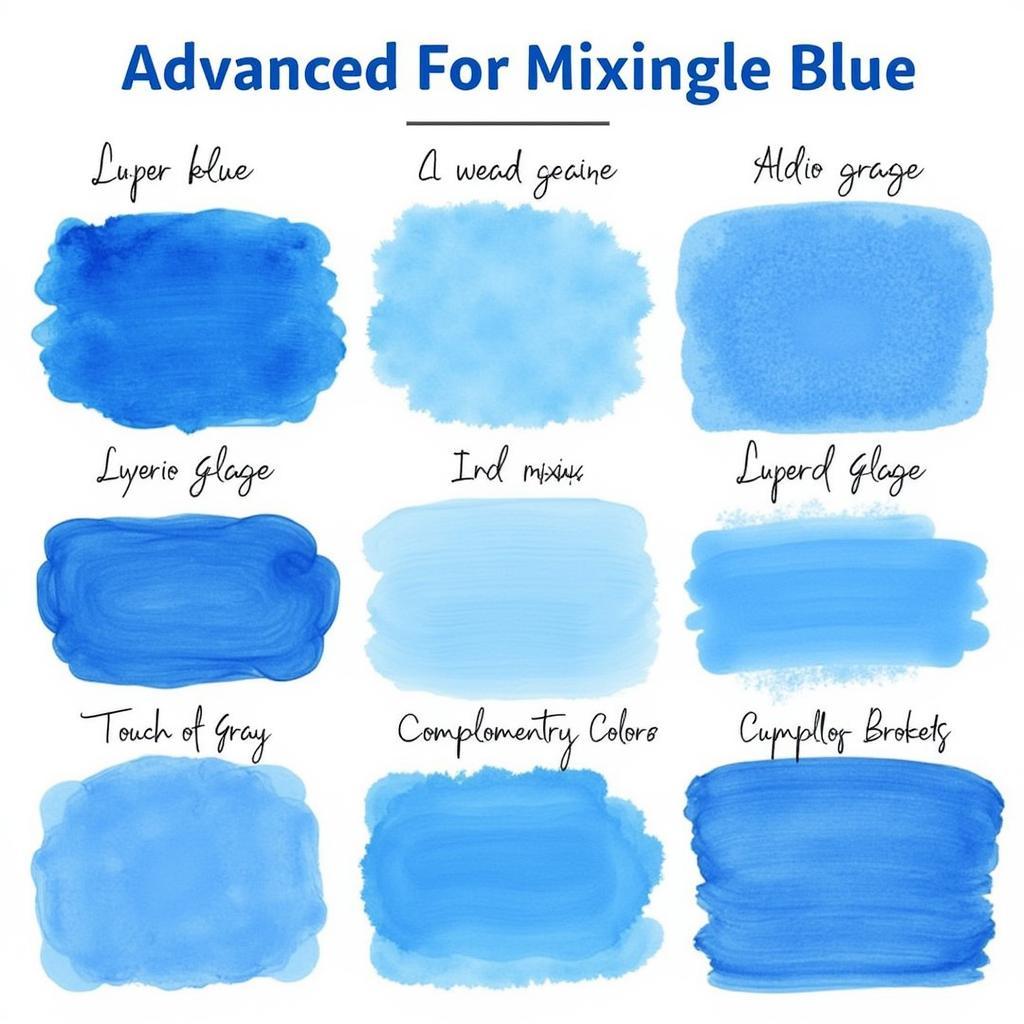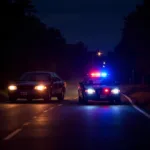The vibrant world of color mixing often starts with a simple question: what mixed colors make blue? Surprisingly, blue is a primary color, meaning it can’t be created by mixing other colors. However, you can create a vast array of blues by mixing blue with other colors, opening up a spectrum of possibilities for artists, designers, and DIY enthusiasts alike. Let’s delve into the fascinating world of blue and explore how to manipulate its hues to achieve your desired shade. what colors mixed together make blue
Understanding Blue: A Primary Powerhouse
Blue, in its purest form, stands alone. It’s one of the three primary colors (along with red and yellow) which form the foundation of the color wheel. This means you can’t mix other colors to get pure blue. Think of it as a building block – you can use it to build other colors, but you can’t build it from other pre-existing colors. However, you can mix blue with other colors to create a diverse palette of blues, from the tranquil serenity of sky blue to the deep mystery of navy.
Mixing Blue: Expanding the Palette
While you can’t create blue from scratch, mixing it with other colors unlocks a world of possibilities. Adding white to blue creates lighter tints, such as powder blue or baby blue. Conversely, mixing black with blue produces darker shades, like midnight blue or navy. what two colors mixed together make blue Combining blue with other colors on the color wheel produces even more exciting results. For instance, mixing blue with green yields teal or turquoise, while blue and red create shades of violet and purple.
What two colors make light blue?
Simply mix white and blue. The more white you add, the lighter the blue becomes.
How do I make dark blue?
To achieve a darker blue, mix black with your blue base. Start with a small amount of black and gradually add more until you reach the desired depth.
Exploring the Nuances of Blue Mixtures
The beauty of mixing colors lies in the subtle variations you can achieve. Even slight adjustments in the ratios of your colors can drastically alter the final result. Experimenting with different proportions is key to understanding the interplay of colors and mastering the art of color mixing. For instance, mixing blue with a touch of yellow can create a greenish-blue, while a larger amount of yellow results in a more distinct teal.
How can I make a specific shade of blue?
The key is to experiment and adjust the ratios of your colors gradually. Start with a small amount of the secondary color and add more until you achieve the desired hue.
Can I mix blue with other colors besides primary and secondary colors?
Absolutely! Mixing blue with tertiary colors (colors created by mixing a primary and a secondary color) opens up even more possibilities, allowing you to create unique and complex shades of blue. how to make a red brown color
 Mixing Blue with Various Colors
Mixing Blue with Various Colors
“Color mixing is a journey of discovery,” says renowned color expert, Amelia Hues. “Don’t be afraid to experiment and embrace the unexpected. Sometimes the most beautiful colors are born from happy accidents.”
Beyond the Basics: Advanced Blue Mixing Techniques
Once you grasp the fundamentals of mixing blue, you can explore more advanced techniques. Layering different shades of blue can create depth and dimension, while adding a touch of gray can mute the vibrancy for a more subtle effect. can you mix tattoo ink colors Remember, the medium you’re using (paint, ink, dye) also plays a significant role in the final color.
“Understanding the properties of your medium is crucial,” adds Ms. Hues. “Different mediums interact with light and pigment in unique ways, influencing the final color outcome.”
 Advanced Blue Mixing Techniques
Advanced Blue Mixing Techniques
Conclusion: Mastering the Art of Blue
While you can’t mix colors to create pure blue, mixing blue with other colors opens a world of creative possibilities. By understanding the principles of color mixing and experimenting with different ratios, you can achieve a vast spectrum of blues, from the palest sky blue to the deepest navy. how to make a gold paint color So, grab your palette, embrace the journey of color exploration, and unlock the endless potential of blue!
FAQ
- What are the primary colors? Red, yellow, and blue.
- Can I make blue by mixing green and yellow? No, green and yellow make different shades of green.
- What is the easiest way to lighten blue? Mix it with white.
- How can I make a muted blue? Add a touch of gray.
- What happens if I mix blue with its complementary color? Blue’s complementary color is orange. Mixing them creates a neutral gray or brown.
- What’s the difference between mixing blue paint and blue ink? The pigments and mediums react differently, resulting in variations in the final color.
- Where can I find more information about color mixing? Many online resources and books offer detailed guides to color theory and mixing.
Need help with your next painting project? Contact us! Phone: 0373298888, Email: [email protected], or visit our office at 86 Cầu Giấy, Hà Nội. We have a 24/7 customer service team ready to assist you.
